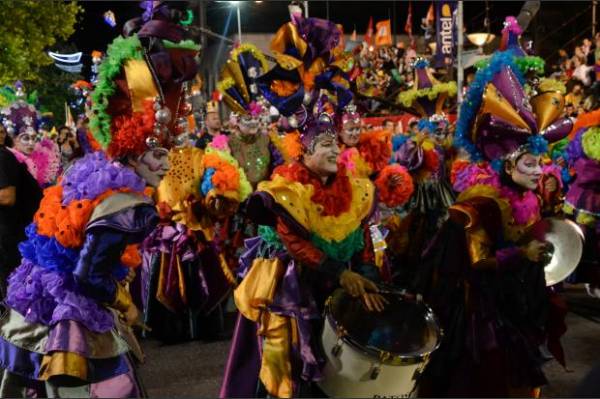
Montevideo: The carnival in Uruguay is the longest carnival in the world. Like every year, hundreds of costumes, drummers and dancers were seen kicking off the Carnival scene. Thousands of people were gathered at Barrio Sur in Montevideo to enjoy the festive occasion.
This popular as well as enchanting festival is generally celebrated every year from late January to early March. The Carnival shows are associated with candombe, Murga and Tablados and exhibited as a total dance parade where different comparsas play drums and perform thrilling dances to the tune of music.
The Carnival is to recall the memories of an era around 1750 when there were slave trades in Montevideo. During that period the slaves were brought mainly from West Africa and they were lost their sense of identity in the new cultural atmosphere. Thus the festive occasion is said to have started by these slaves. Taking permission from their masters, they were used to gather in their houses in Montevideo. The intention of the festive event was to get in touch with their origins.
During the occasion, the slaves were used to remind their traditional music and tried to recall the memory of their homeland. Their music and dance style later came to be known as candombe. This festival generally last for 40 days and involves a series of cultural events such as dance parades, street stages and an artistic contest.
Las Llamadas is a Spanish term, which means “the Calls”. After the eradication of slavery, the Uruguayan citizens are said to have formed a new group referred to as “Negro neighborhoods”; and thus Sur and Palermo happened to stand out among these groups.
Comparsas are a group of persons who sing and dance to candombe music. The word ‘luvelos’ is used to refer white people who dress up as black people so as to take part in the dance parades of the colonial times.
Video on Uruguay Carnival Festival